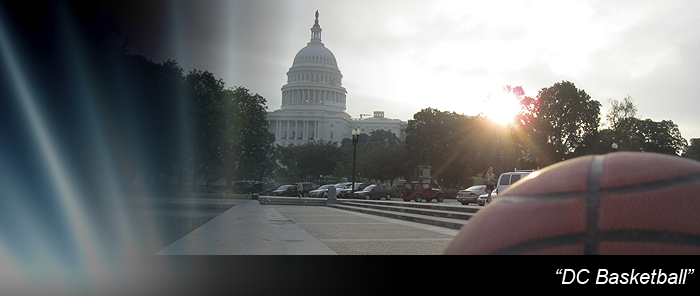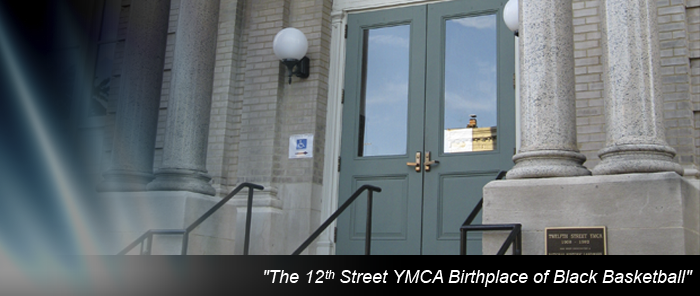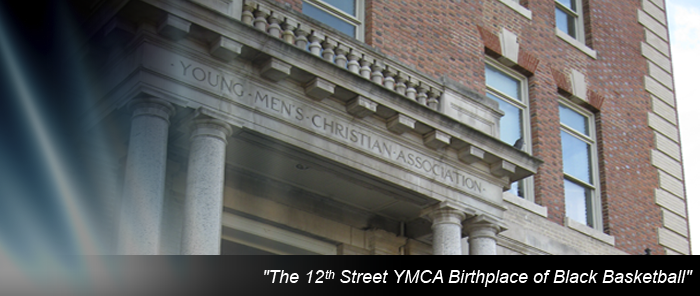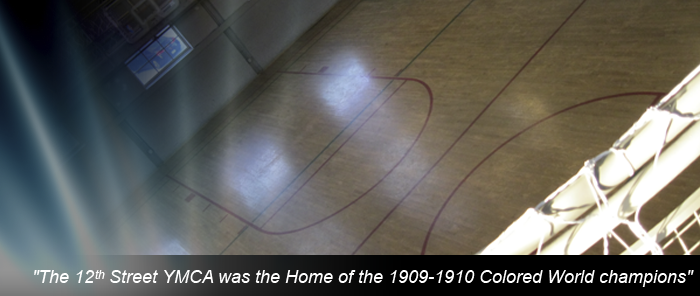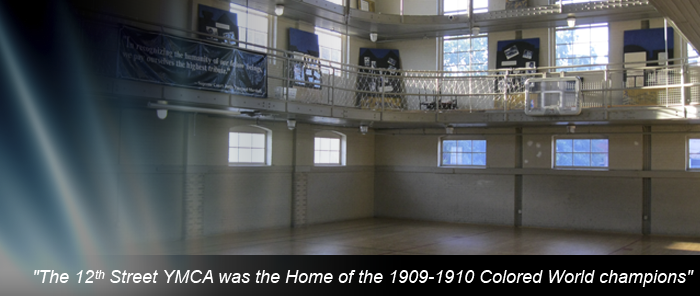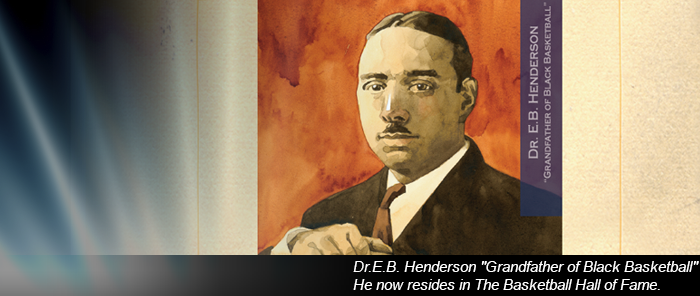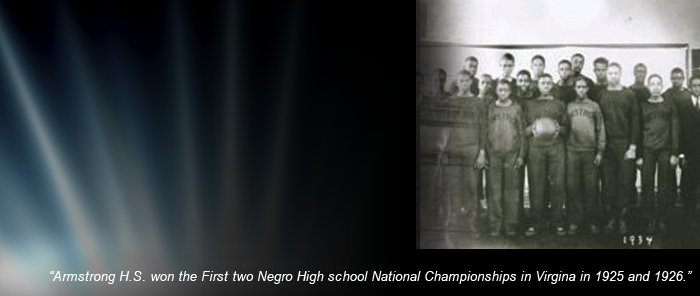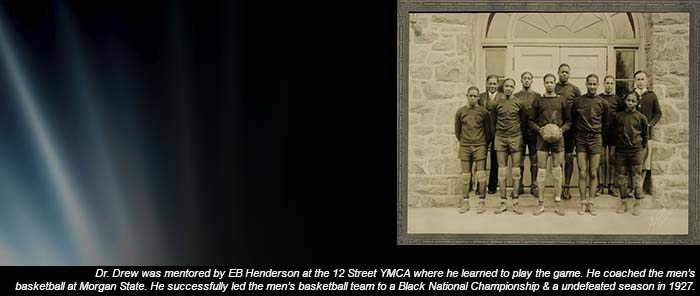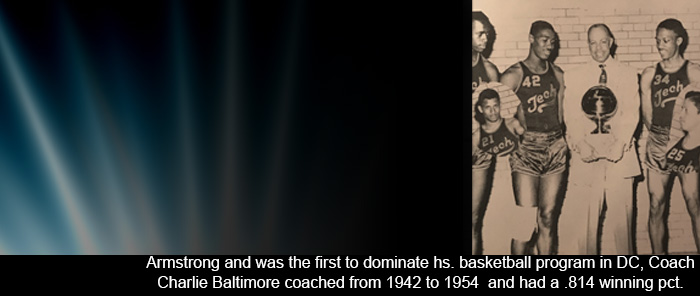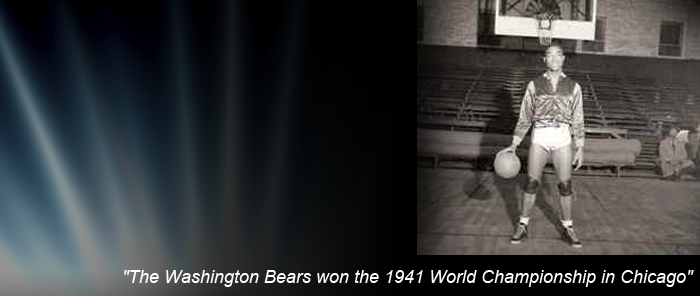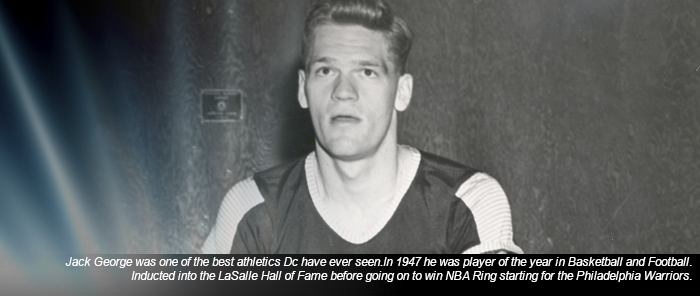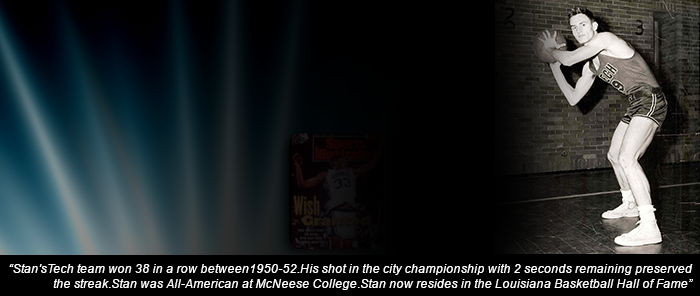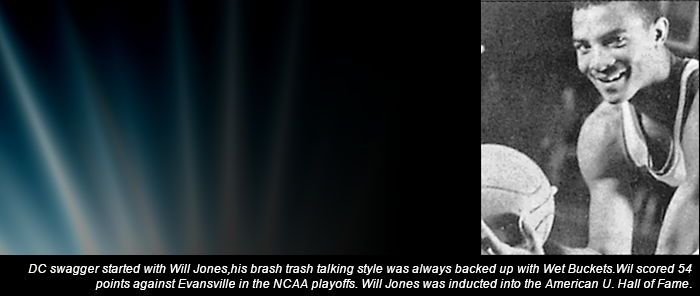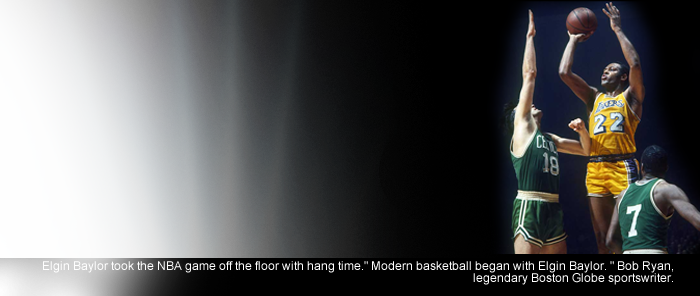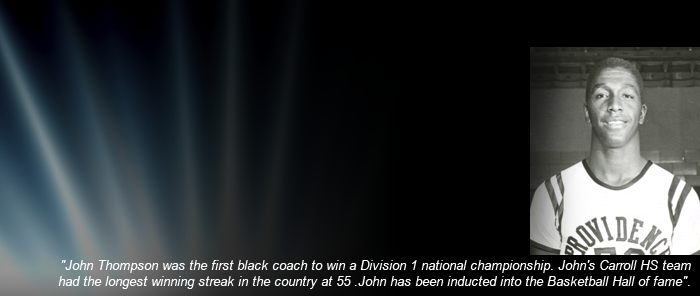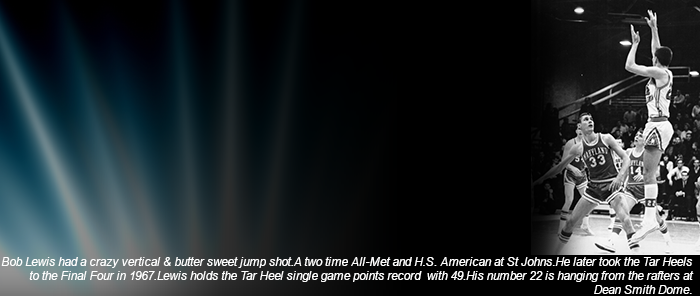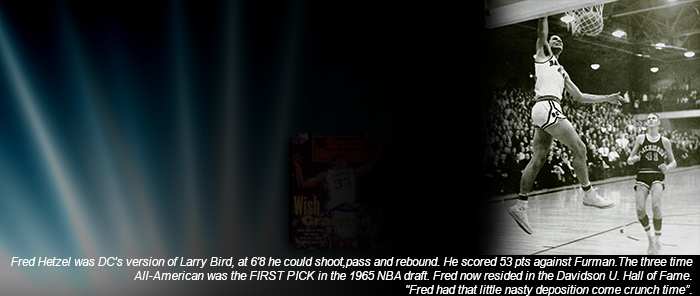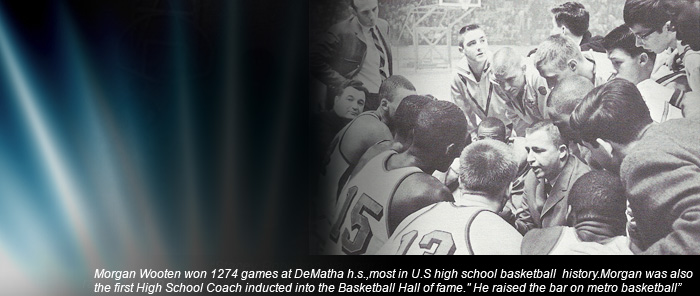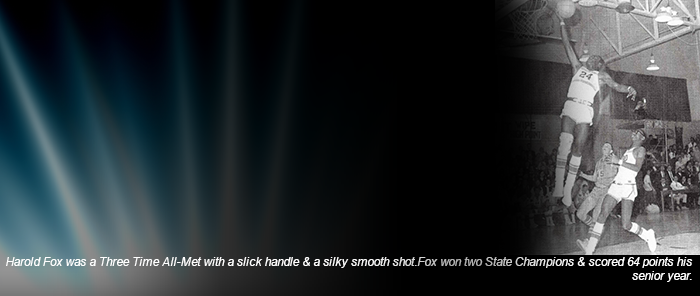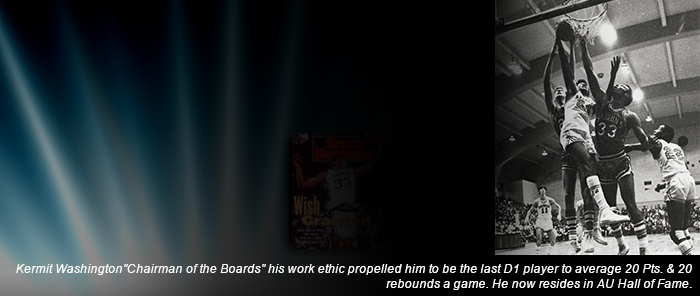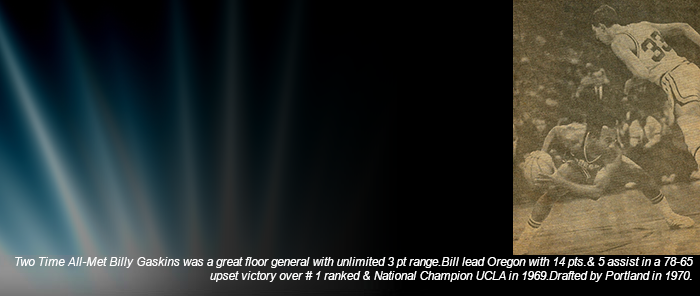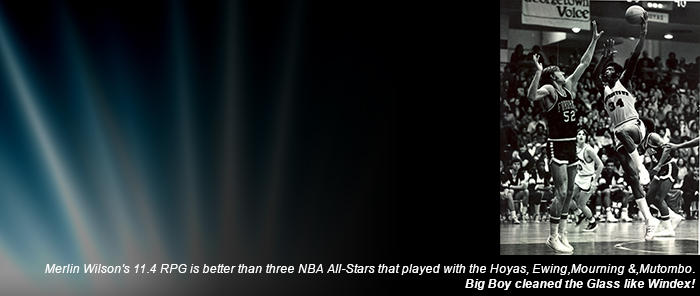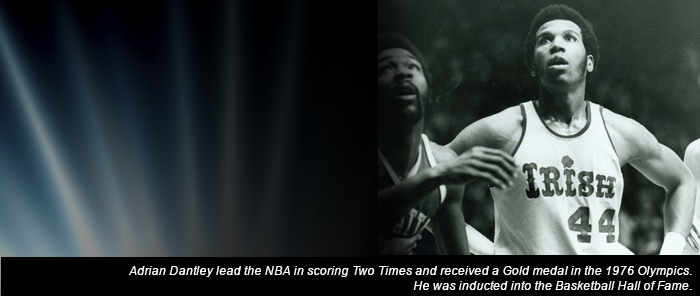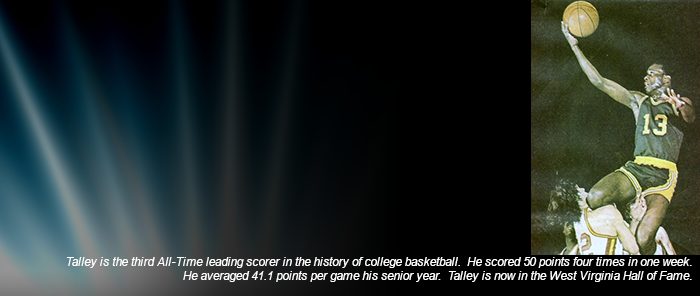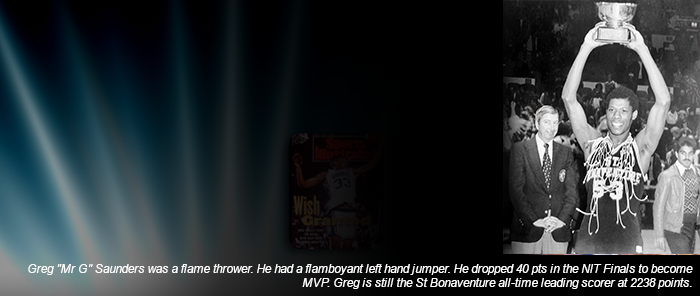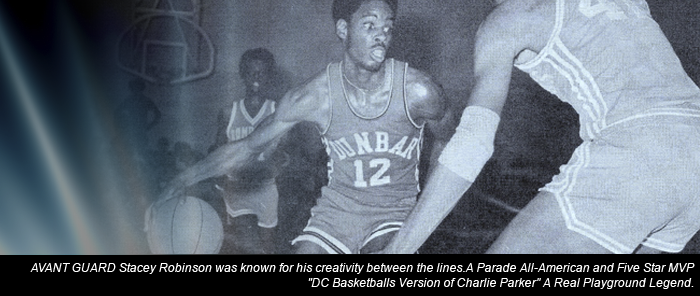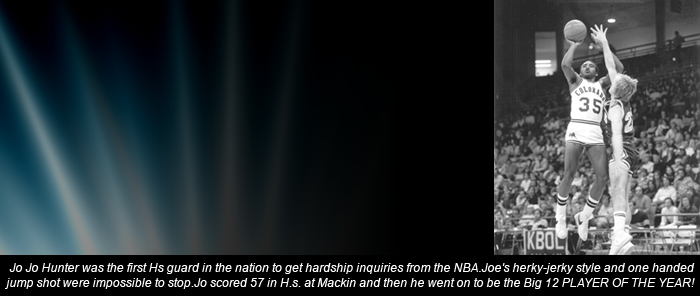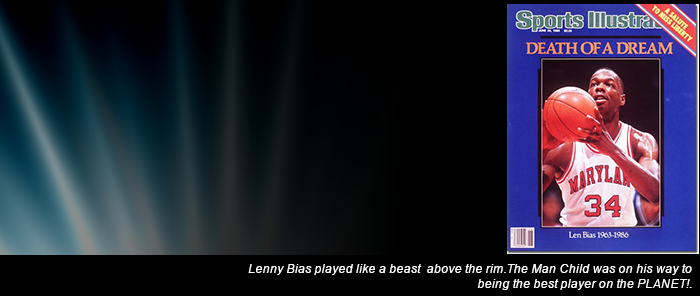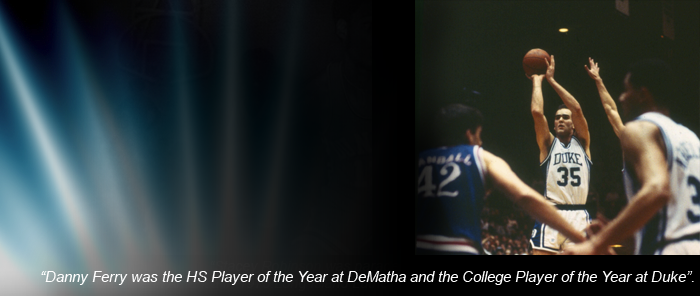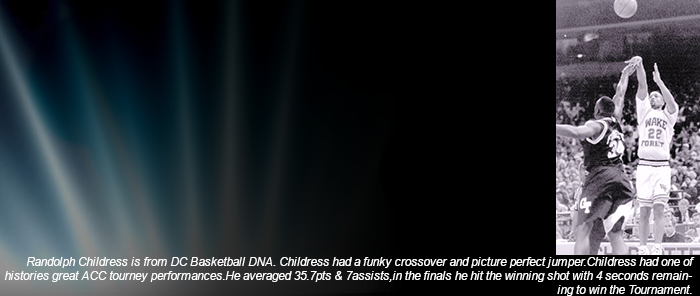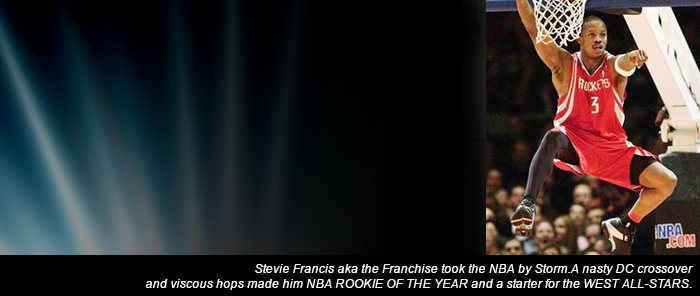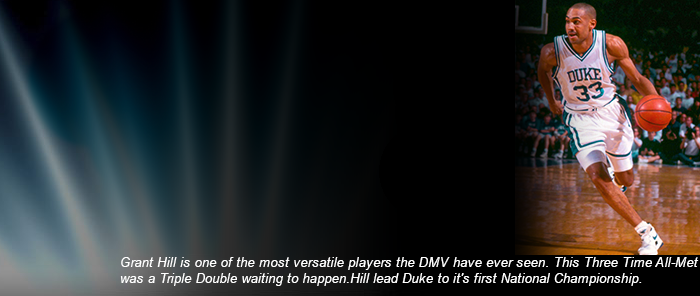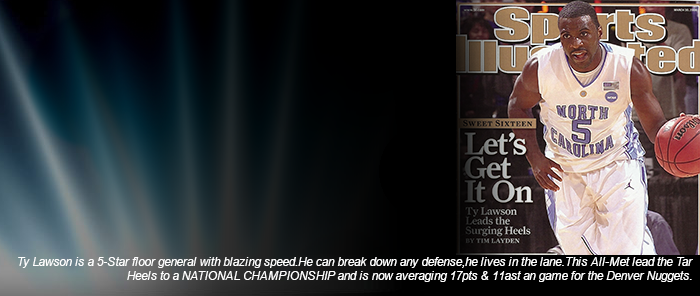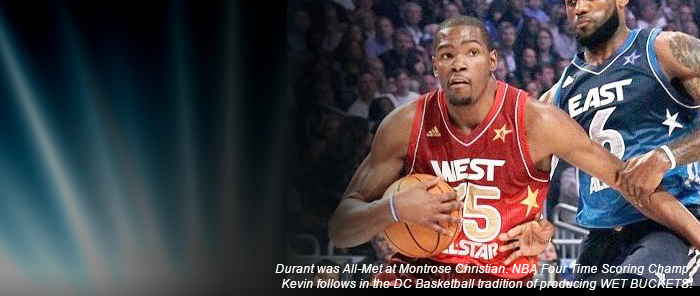
Blast From The Past - Stan Kernan
If you visited Gold’s Gym in Charles Town, WV, just down the highway from the race track, you might spot an older gentleman shooting baskets in the gymnasium by himself. It’s certainly not by choice. "The problem is the young kids open the door to the gym and think it’s just an old guy shooting," he says, sounding slightly annoyed. "They don’t want to get a game going. Well, I can’t play full court anymore, but I can still go half court." The love of competitive has never left Stan "Snookie" Kernan, now 72 years young and one of Washington’s basketball greats from the 1950s. A six footer known for his hard-nosed play and sweet shot, Kernan was a three-time All-Met player at McKinley Tech from 1950-1952, leading the segregated white schools in scoring during his junior and senior years. Kernan recently sat down with D. C. Basketball to reflect on his storied McKinley Tech teams, the city’s segregated playground scene during the early 1950s, and a basketball voyage in the U. S. Navy that landed him in the U. S. Olympic Trials against Bill Russell and ultimately collegiate stardom at McNeese State College. In 1988, Kernan was inducted into the Louisiana Basketball Hall of Fame. After a prolific career as the basketball coach at Parkdale High High School in Riverdale, Maryland, where he won four state titles - two with the boys, two with the girls - Kernan retired to a his one-time summer home outside of Charles Town, where he lives with his wife Louise.
----
YOUR McKINLEY TECH TEAMS FROM THE EARLY 1950s WERE KNOWN AS "THE FABULOUS FIVE." WHO WERE THE MEMBERS OF WASHINGTON’S VERY FIRST "FAB FIVE?"
In addition to me, the Fabulous Five was:
--Bill Breen, a six-footer and three time All-Met player. Bill was a tremendous set shooter and zone buster. He averaged about 16 points a game.
–Frank Sullivan played center at six foot three. Frank didn’t score much, but he was a tough defender and rebounder who got our fastbreak rolling. He was an all-Met, too, in his senior year.
–Joe Caw played in the backcourt and was good for about 12 point a game. Joe was second team All-Met as a senior, and I remember him as an extremely strong player who later was an All-American football player in junior college.
–Babe Marshall was a lefthander who set up our offense and averaged 12 points a game. Babe graduated mid term in 1952, missed the final weeks of our senior year, but still earned honorary first team All-Met. After Babe graduated, our sixth man Dick DeCesare filled in and did a tremendous job.
THE FAB FIVE WON THREE INTER-HIGH LEAGUE CHAMPIONSHIPS, THREE POST-SEASON WASHINGTON AREA TITLES, AND SPORTED A 27-GAME WINNING STREAK WHEN YOU GRADUATED. NUMBERS ASIDE, HOW GOOD WAS McKINLEY TECH?
Pretty darn good. Let me give you an example. We had a team in the summer league at the Jellef Boys Club. The league included teams from the University of Maryland, George Washington University, and American University. Andrews Air Force Base also had a team. So did Fort Meyers with the All-American Dick Grote. Cliff Hagan, one of the all-time NBA greats, also played in the summer league. Well, our McKinley team won the summer league.
Actually, I should qualify that. Our McKinley team plus Gerry LeCompte from Gonzaga High and a six-foot-seven center named Frank Fuqua won the Jellef summer league. Frank went to junior high with us but decided to attend DeMatha High School. He was an outstanding big man, and NBA great Paul Arizin later called him one of the best big men he ever faced. But the point is: A bunch of high school kids beat some of the best. That gives you an idea not only of how good McKinley was but the high quality of prep basketball in Washington, D. C. back then.
I’VE HEARD WHAT MADE McKINLEY SUCH AN AMAZING TEAM IS YOU WERE ALL SELF TAUGHT PLAYERS WHO LEARNED THE GAME ON THE PLAYGROUND. IN FACT, YOUR HIGH SCHOOL COACH WAS A WRESTLER WHO HAD NEVER PLAYED BASKETBALL. IS THAT RIGHT?
That’s right. We grew up together over by McKinley Tech on North Capitol Street, about two blocks up from Rhode Island Avenue. We played together at Langley Junior High, then moved on to McKinley Tech. We were just a bunch of working class white kids who loved to play basketball.
TODAY, WE THINK OF PLAYGROUND BASKETBALL AS SHOWTIME. BUT THAT WASN’T THE CASE WHEN YOU WERE A KID?
Yeah, things were different then. Players learned a team concept on the playground. There was no dribbling around to get your shot, all of the individual stuff that you see today. If somebody gunned 20 shots in a game, he probably wouldn’t have played with us again, even if he made 15 of them. Everybody would have said, "Hey, I don’t want to play with that guy. He doesn’t pass the ball."
WHAT WAS THE TEAM CONCEPT THAT YOU BROUGHT FROM THE PLAYGROUND TO McKINLEY?
It involved a lot of give and go, the pick and roll. Fundamental basketball. You just passed the ball, and somebody passed it back to you. You cut to the basket, set up in the post and got out quickly. You didn’t stand in there like they do today. Nobody formally taught us any of this. It’s just what we did on the playground.
KIND OF LIKE MUSICIANS PLAYING OFF OF EACH OTHER.
Right. Nobody cared who scored or what the score was. I mean, you never looked over the stat sheet after the game. You didn’t care. What mattered was that you won. Because if you lost on the playground, you’d sit on the sidelines for hours before you got another game, and we took that all-for-one mentality with us to McKinley Tech.
THE FAB FIVE WAS KNOWN FOR ITS FASTBREAK. HOW DID IT WORK?
We just did it. It wasn’t anything planned. We got the rebound and went, and we all could run forever. Let me tell you, there was no set offense either. We just played ball. It’s hard to believe, but it worked.
AND McKINLEY WAS A SMALL TEAM, RIGHT?
Yeah. Our biggest starter was six foot three. Like I said, we could all run and jump, especially run. We could score 100 points on our best nights, which was considered unbelievable back then. As you mentioned, our coach was a former wrestler. He directed the show, where to go and what to do, but we did everything ourselves. We had played together for so long.
A LOT OF THE INTER-HIGH GAMES WERE PLAYED AT ULINE ARENA. I REMEMBER READING THAT NBA GREAT JERRY WEST THOUGHT ULINE ARENA WAS THE WORST FACILITY THAT HE’D EVER PLAYED IN. WAS IT THAT BAD?
Oh yeah. The floor was terrible. The floorboards would give when you ran. Sometimes you’d dribble the ball, and it wouldn’t come back. They had ice underneath the floor most of the time, and you know how that is? As the ice melted, water would seep through. But, you know, to us, it didn’t make any difference. We were playing at Uline Arena. It was the largest facility in Washington at the time, and we could get lots of people in there.
LOOKING THROUGH OLD NEWSPAPERS, THE INTER-HIGH GAMES DREW UP TO THREE OR FOUR THOUSAND FANS. THAT’S CERTAINLY NOT ON PAR WITH THE CROWDS IN INDIANA.
Maybe, but the games always seemed pretty crowded at Uline. Let’s say, Tech was playing Roosevelt in the first game of a doubleheader. The crowd would be mainly from those two schools. Afterwards, our fans would clear out, and the supporters of the teams in second game of the doubleheader would fill the seats.
HOW WERE THE CROWDS WHEN YOU PLAYED AT McKINLEY TECH?
The place was always packed. I don’t remember the gym’s capacity, but you couldn’t get in once the game started. My recollection is McKinley Tech was the first high school in the Washington, D. C. area to have glass backboards. We had bleachers behind the baskets, and the glass backboards allowed people who sat there to see more of the action. We don’t think of that today, but it was a big deal back then.
SPEAKING OF ULINE ARENA, THE WASHINGTON CAPS OF THE EARLY NBA YEARS PLAYED THERE. DID YOU EVER WATCH THE CAPS?
Oh yeah. I think it cost us 50 cents to get into the games. It was just exciting to know that they were pros. I’ve got a funny story about the Caps. When I was a kid, Red Auerbach coached the Caps but also managed the swimming pool at McKinley Tech. I’m guessing that he did it as a second job because NBA coaches didn’t have the big contracts then like they do today. Several of his players would come up there on the playground, and I’d shoot baskets with them. What are the chances of that happening today?
PLAYGROUNDS IN THE 1950s
YOU MENTIONED LEARNING THE GAME ON THE PLAYGROUND. WHERE?
At a playground called Edgewood. It was down near Michigan Avenue, and we’d walk up North Capitol to Fouth Street, N. E. to get there. Back then, you could walk anywhere and never worry about a thing. Or if you had a nickel or a dime, you could take the streetcar there. Edgewater had a little dirt basketball court, and the best players in that area would go down there and play all day and night. The great Jack George, who later played at LaSalle University and the NBA Philadelphia Warriors - all of those guys. That’s where I learned to play basketball.
ON A DIRT COURT?
On a dirt court that had only one basket. We played half court. Let me tell you, though, it was tough. If you lost, you had to sit down the rest of the day because there were so many people waiting there to play.
THIS IS WHEN?
Before I went to high school in the late 1940s. You’d go down there and, by the time you finished playing, your legs were completely caked with dust.
COULD YOU DRIBBLE ON THE DIRT?
A little bit. But it was just dirt. Dust. The backboard was poor. What brought you there was just the idea that you were playing against the best in that area. That’s where I learned to be tough. They’d knock the heck out of you. It wasn’t like a little tap on the wrist. They’d knock you down and, like everybody, I got back up and played harder.
WHERE ELSE DID YOU GO?
When we were in high school, we went up to Turkey Thicket and played against the black kids. You talk about followings. It was obviously different back then in that the black kids lived in different areas and went to different schools. But the best black players - Elgin Baylor and all of them - would come down to Turkey Thicket. We were all high school kids, and I’ll tell you there were people all over the place watching. They had heard about the games on Saturdays and Sundays, and it would be packed with people who had come just to watch the game.
WERE THE TEAMS WHITE ON BLACK? OR, WERE THEY MIXED?
They were all white and all black. But there was no arguing, fighting, yelling, nothing. We just played hard, and it was really good competition and sportsmanship. The same thing happened after I graduated when I played against Will Jones, who later starred at American University. They had a team down in D. C., and we had a team from around town. We’d go down and play, and we played some hard games.
WHERE WERE THESE GAMES?
Downtown in a school gym. The people watching were mostly black, and they would cheer for us as much as they would for Will’s team. I guess you just appreciated good basketball back then.
SEGREGATION WAS AN UNFORTUNATE FACT OR LIFE IN THE EARLY 1950s. BUT BASKETBALL STILL BROUGHT THE RACES TOGETHER. HOW DID YOU START PLAYING AT TURKEY THICKET?
I don’t know how it got started. I know that we’d go down there and play, and I guess somebody said why don’t you bring your guys back and we’ll do it again. And it worked out. Who won, I can’t remember. They probably won sometimes, and we probably won sometimes. It was just good competition, and we enjoyed it because you were playing against the best. They’d read our names in the newspaper, and we’d read theirs. So, it was nice to get to know each other. We didn’t hang out together or anything, but we respected each other.
IF YOU DIDN’T HAVE CARS, HOW LONG DID IT TAKE YOU TO GET TO TURKEY THICKET?
Well, it as a pretty good haul. We walked everywhere. If somebody had a car on occasion, then you’d drive with them. But we walked everywhere.
OKAY, LET’S SAY ONE OF YOUR BUDDIES HAD ARRANGED A GAME AT TURKEY THICKET AND TOLD YOU TO BE THERE AT SUCH AND SUCH A TIME . . .
No, no. They didn’t say that. You’d be there.
YOU KNEW TO BE THERE?
Saturdays and Sundays, you’d be there. That’s just the way it was. We’d play basketball all day long. No lunch, no nothing. You’d play basketball.
SO WHEN YOU WOKE UP ON SATURDAY MORNING, YOU’D TAKE A SHOWER KNOWING YOU HAD TO BE OUT THE DOOR EN ROUTE TO TURKEY THICKET.
Well, you might go pick up your buddies, say "let’s go," and get everybody together. If any of them had a car, then you’d ride. But if they didn’t, you walked. You know, if you walked there, you’re going to stay. You’re not going to go home, eat lunch, and come back. You just played. You looked forward to the competition. I never saw anything like today when they argue and fight. I don’t remember anybody getting into fistfights. It just about the competition and playing hard. You might hurt each other by accident. But you’d get up and keep playing.
WHEN YOU FIRST SAW ELGIN BAYLOR PLAY, HOW UNIQUE OF A PLAYER WAS HE?
To be honest with you, we all loved to play, and Elgin was just one of the players that we played against. Remember Elgin was a little younger than us. But he was a big kid.
BAYLOR WAS A BIG KID, BUT HE COULD HANG IN THE AIR.
Oh, everybody did back then. I think everybody had hesitation shots. You know, just all of that kind of stuff. But when I saw him in the pros [chuckling], I was amazed at how he could do what he did.
KERNAN ON KERNAN
YOU LED THE CITY IN SCORING IN HIGH SCHOOL AS A SENIOR WITH A 21.0 PER GAME AVERAGE. HOW DID YOU SCORE YOUR POINTS?
I was a jump shooter and also drove to the hoop a lot. Looking back, I think I was one of the first in the area to shoot a jump shot. What happened was, early in my high school career, I wasn’t a big scorer. I thought I’d better learn how to shoot, and that’s when I saw a guy named Jumpin’ Joe Fulks play on television. He shot a jump shot, and I thought, "I like that. I’m going to have to give it a try." I went out and started practicing on my own until I got it down. Nobody showed me how to shoot a jump shot. I just figured it out - and it worked [laughing].
SO YOU WERE A JUMP SHOOTER IN HIGH SCHOOL SURROUNDED BY SET SHOOTERS?
Yes. The thing is if you’re fairly quick, you can just drive, stop, and shoot the jump shot over the defender. If the defender played you tightly, you could go right around them for the lay up. But it was different, too, back then. Today, they call so many offensive charges. Back then, I used to run over people, and the refs called the foul on the defender. It’s just the way it was. You’d drive to the basket and, if anybody got in your way, you’d just knock them down.
AND YOU DID IT ALL GAME?
That’s right. Our starting five played all game, unless we were way ahead. They don’t do that today. In high school, I don’t ever remember being substituted for. I mean, never. You just played the whole game. That’s the way it was.
DID YOU GROW UP DREAMING OF PLAYING COLLEGE BALL?
I didn’t even think about it. See, nobody guided any of us. We were just a bunch of teenagers doing our thing, living day to day. Back then, college coaches rarely came around to talk to high school players. Often it was the other way around. You asked coaches if you could come play for them.
COLLEGE WAS A MOOT POINT ANYWAY BECAUSE OF THE KOREAN WAR.
Yeah, everybody got drafted straight out of high school. It was just the way it was.
SO YOU JOINED THE NAVY. WHAT DID YOU DO?
After boot camp in 1953, I was assigned to a ship in Newport, Rhode Island. It was a 365-foot destroyer, and I was a fire controller. I’d look through the range finder, lock onto the target, and estimate the distance to fire the guns.
DID YOU THINK YOUR BASKETBALL CAREER WAS OVER?
Pretty much. But I heard that the ship had its own basketball team that would play games at our various ports of call. On that team was a lieutenant who one day told me that a tryout was under way in Norfolk, Virginia for the fleet team. I must have impressed him my game because he went to the captain of my ship and got him to send me to Norfolk for the tryout.
THAT WAS A BIG MOMENT FOR YOU?
It really shaped the rest of my life. I made the fleet team, and the admiral ordered the captain of my ship to send me back to Norfolk a second year. That’s when I got picked up to participate in the All-Navy Tournament. I made the All-Navy team, then I made the All-Service team in 1956. In those days, the All-Service team automatically went to Kansas City to participate in the Olympic trials. As I tell my wife, it was as if somebody was looking out for me. I could have just as easily stayed on that destroyer and never played basketball again.
YOU DIDN’T MAKE THE 1956 OLYMPIC TEAM. BUT WEREN’T THE ODDS ALSO STACKED AGAINST YOU?
They were. I was the only non college player there. The other players were all college graduates, and I was just an anonymous kid from nowhere. I really wish that I could have fathomed what was on the line at the tryouts. To tell you the truth, I didn’t know how I had gotten there. I was just there, and I didn’t have any money because my [military] records were all screwed up. All I had was a duffle bag with a few clothes.
You know, had I been an aggressive person who went out and shot the ball every time like players now do, who knows what would have happened? But I didn’t. I just went there and played. I didn’t try to do anything differently. I didn’t know any better, and I didn’t have a mentor to advise me.
YOU PLAYED AGAINST BILL RUSSELL DURING THE TRYOUT. HOW’D THAT GO?
I really didn’t know who Russell was. I knew he was a member of the College All-Stars but, like I said, I didn’t know what was going on.
BUT YOU GOT A KNOCK ON YOUR DOOR?
Right. One day, I was laying in bed and heard this knock on my door. It was Adolph Rupp, the famous head coach at University of Kentucky. He came into my room and asked if I wanted to come play for him?
WHEN YOU WERE A KID, DID YOU EVER DREAM OF PLAYING FOR ADOLPH RUPP?
Nooooo! I never thought about those things. I wish that I had. When Coach Rupp finished, Everett Case walked in and talked to me about going to North Carolina State. I was about to be discharged from the Navy, and I told them that I didn’t know what I wanted to do. Remember I’d never been recruited.
HOW DID YOU END UP AT McNEESE STATE?
Well, Coach Ward of McNeese State came into my room after them. McNeese had just won the NAIA national championship, and Coach Ward kept in contact with me when I got out of the service. I finally told him, "I’ve got two buddies that I’ve played with all of my life. Would you give them scholarships, too, if I came down there?" They were Bill Breen and Gerry LeCompte. He said okay, although LeCompte ended up never going to school there. That’s how I got down to McNeese.
DID YOU EVER GO TO KANSAS CITY FOR THOSE LEGENDARY NAIA NATIONAL CHAMPIONSHIP TOURNAMENTS?
No, McNeese stopped going. I’ll tell you what happened. I should have quit right then and there. The state of Louisiana wouldn’t let its white colleges play against blacks, and there were blacks in the NAIA Tournament. Can you believe that? Those were the rules, and it was stupid. It was a bad, bad situation. When I was there, we won the Gulf States championship every year, and we couldn’t do anything. Our season ended right there.
AFTER YOUR JUNIOR YEAR AT McNEESE, YOU LEFT TO PLAY IN THE NATIONAL INDUSTRIAL BASKETBALL LEAGUE. WHY?
It’s a long story. At McNeese, without a postseason, we played for a local A.A.U. team instead. We won the area championship and went to Denver for the national tournament. We beat Goodyear in the first game, and the Goodyear coach contacted me afterwards to come play for his team. When I got back to school, I told my wife, and we decided the money was too good to pass up. So, I decided to give it a try.
HOW MUCH DID GOODYEAR PAY YOU?
Oh, I was making good money, really good money. I worked for the company, attended classes, rotated to the various divisions of Goodyear, and then you practiced and traveled with the team. Keep in mind I wasn’t being paid to play basketball but to work for Goodyear. It was still considered amateur basketball. We’d fly off to play games for three or four weeks, then come back. At the time, the company teams offered more financial securty than the NBA, and a lot of the guys in the Industrial League were on par with those in the NBA. I played one year with Goodyear in 1959-1960, then the league had troubles and I returned to McNeese for my senior year.
BUT FIRST YOU HAD ANOTHER OLYMPIC TRYOUT?
That’s right. The winner of the National Industrial League received an automatic berth at the Olympic tryouts, and Goodyear won the title in 1960. This time, I knew who the college stars were, players like Jerry West and Oscar Robertson. Let me tell you, I was amazed by Oscar Robertson. He was just unbelievable.
WHY?
You just couldn’t stop him. Everything that he did was just so smooth.
YOU GRADUATED FROM McNEESE AND HEADED BACK TO WASHINGTON. THAT’S WHERE YOUR BASKETBALL CAREER CAME TO AN END.
It did. I think I was 26 years old then and had two children and, although I gotten a few letters from pro teams, I just couldn’t take a chance with them. I needed a stable job to support my family. I ended up teaching at a junior high first, then I became the first boy’s basketball coach at the Parkdale High School. I retired from Parkdale in 1988.
WHERE WOULD YOU HAVE BEEN WITHOUT BASKETBALL?
That’s a scary thought. Everything that I’ve accomplished in my life came from basketball. It gave me a college degree, a teaching job, a retirement, and a family. Like I said, my basketball career could have easily come to a screeching halt one place or another. I never planned it out, but it just seemed to go. Thank God, that my career went that way. Let me say, though, I loved the game. I think everybody in my era loved playing basketball and you looked forward to getting out there every day.
THANKS FOR TALKING WITH ME.
My pleasure.

